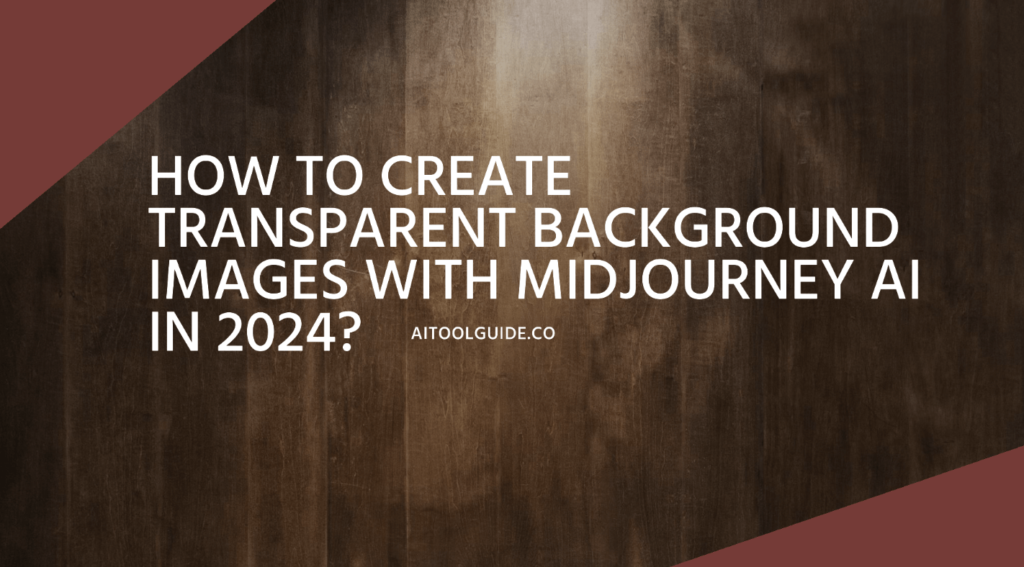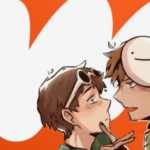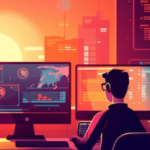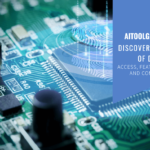First, Midjourney AI cannot directly create images with transparent backgrounds. Midjourney generates images in JPG format, which does not support transparency.
This limitation poses a challenge for designers and content creators who want to use Midjourney images in various projects that require transparent PNG files.
However, with some creativity and additional editing, it is possible to transform Midjourney JPGs into transparent PNGs.
The process involves generating images with solid, contrasting backgrounds in Midjourney and then manually removing the backgrounds using image editing software like Photoshop or online tools.
By optimizing prompts, selecting minimal art styles, and providing clear instructions, users can create Midjourney images that are easier to edit for transparency.
While the inability to directly export transparent images from Midjourney may seem like a drawback, it also presents an opportunity for users to develop their editing skills and explore new creative possibilities.
With the right techniques and a bit of effort, anyone can learn how to turn Midjourney’s stunning AI-generated art into versatile transparent assets for their projects.
Understanding Midjourney’s Limitations for Transparency
Midjourney AI generates images in the JPG format, which does not support transparency.
This means that Midjourney cannot directly create images with transparent backgrounds, posing a challenge for designers and content creators who often require PNG files with transparency for their projects.
Transparent backgrounds are incredibly useful as they allow for easy integration of images into various designs and compositions.
With a transparent background, an image can be seamlessly overlaid on other graphics, websites, presentations, or videos without the background clashing or appearing out of place.
This flexibility is crucial for designers creating logos, icons, or other graphics that need to be used across multiple platforms or contexts.
Moreover, transparent backgrounds enable greater creative freedom, as designers can experiment with layering images, creating depth, and building visually appealing compositions.
For content creators, transparent images are essential for creating engaging social media posts, digital ads, or promotional materials that stand out and grab attention.
Despite the limitations of Midjourney AI in directly producing transparent PNGs, some workarounds and techniques allow users to generate images optimized for background removal and manually edit them into transparent assets using external tools.
4 Steps to Create Transparent Background Images With Midjourney
Step 1: Create Your Image with a Solid Background
When generating an image in Midjourney, use prompts that specify a plain, solid background, preferably white or another single color. This will make it easier to remove the background later. Some keywords to include in your prompt are:
“plain background”
“white background”
“solid <insert color> background”
“no background”
You can also add negative prompts to avoid unwanted details:
“–no realistic photo details”
“–no text”
“–no shadows”
For best results, use prompts that generate images with clearly defined lines and minimal backgrounds, such as:
“simple logo”
“vector”
“flat”
“minimal”
Step 2: Upscale and Download Your Image
Once Midjourney generates image samples based on your prompt, select the one you like best and use the U1-U4 buttons below it to upscale the image to a higher resolution. Click the upscaled image to enlarge it, then save it to your device.
Step 3: Remove the Background
Open the saved image in an image editing program that supports transparency, such as Adobe Photoshop, GIMP, or even mobile apps like Adobe Photoshop Express. Use the software’s selection tools (e.g. Magic Wand, Quick Selection) to select the solid background.
Adjust the tolerance settings if needed to avoid selecting parts of the main subject. Delete the selected background. Use the Eraser tool to clean up any remaining background pixels.
In Photoshop, you can also:
Use Select > Subject to automatically select the main subject
Go to Select and Mask to refine the selection and remove any unwanted parts
Enable Decontaminate Colors to remove background color contamination
Output the result to a new layer with a transparent background
Step 4: Save as PNG
Save your edited image in PNG format to preserve transparency. Avoid saving in JPEG format as it does not support transparency. And that’s it! You now have a PNG image with a transparent background that you can use in various projects.
While Midjourney itself does not directly output transparent PNGs, by following these steps to generate images optimized for background removal and editing them yourself, you can easily create transparent Midjourney art.
Using the Transparent PNGs in Design Projects
Transparent PNG images created from Midjourney artwork offer a wide range of possibilities for use in various design projects. One of the most common applications is overlaying these images on different backgrounds.
By removing the background, you can seamlessly integrate the subject into any design, allowing it to blend with the colors, patterns, or textures of the new background.
This technique is particularly useful for creating eye-catching social media posts, website graphics, or presentations that require a cohesive visual style.
Another popular use for transparent Midjourney PNGs is creating custom stickers, logos, icons, and clipart. With the background removed, these images can be used as standalone design elements or incorporated into larger compositions.
For example, you can create a unique logo by combining a transparent Midjourney character with text and other graphic elements. Similarly, you can design custom stickers or icons featuring Midjourney artwork to add a distinctive flair to your projects.
When using transparent PNGs in your designs, you may need to perform additional editing to optimize the images for your specific use case.
Resizing is a common task, as you may need to adjust the dimensions of the image to fit your layout. Tools like Adobe Express offer easy-to-use resizing capabilities while maintaining transparency.
Upscaling is another useful technique, particularly when working with smaller images or when you need to print the design at a larger size. Programs like Cupscale and Chainner can help you upscale transparent images while preserving quality.
In addition to resizing and upscaling, you can enhance your transparent Midjourney PNGs by applying various effects.
Adjusting the opacity of the image can create interesting layering effects or help the subject blend more naturally with the background.
You can also experiment with color overlays, gradients, or shadows to add depth and visual interest to your designs.
Conclusion
Creating transparent background images with Midjourney AI involves optimizing prompts to generate images with solid, contrasting backgrounds and using image editing tools to manually remove the backgrounds.
By incorporating keywords like “white background”, “PNG style”, and negative prompts to avoid unwanted details, users can generate images that are easier to edit for transparency.
The process of manually removing backgrounds using tools like Photoshop or GIMP, combined with techniques for refining selections and handling tricky areas, allows users to transform Midjourney JPGs into versatile transparent PNGs.
Experimenting with these techniques opens up a world of creative possibilities, enabling users to incorporate Midjourney art into various design projects seamlessly.
The benefits of transparent background images, such as easy integration, visual appeal, and flexibility, make the extra effort of manual editing worthwhile.
With practice and exploration, anyone can master the art of creating stunning transparent images using Midjourney AI.
- Guide to Connect Claude AI with Google Sheets in 2024 - October 11, 2024
- What is DreamGF? Honest review by Expert - October 9, 2024
- How to Use Claude AI in 2024? - October 7, 2024






